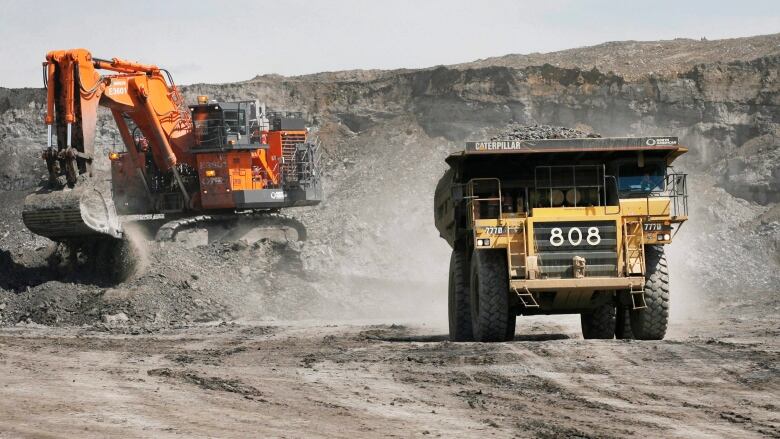As Alberta oilsands site fights infections, some want fewer fly-in workers
106 known infections associated with Imperial Oil's mine near Fort McMurray

A coronavirusoutbreak at an Alberta oilsands site has spread across fiveprovinces and sparked calls to limit the use of fly-in workersin the remote locations.
Any restrictions would upend a labour model that the industry depends on. Projects that use fly-in workersrepresent more than half of the region's crude productioncapacity.
There are 106 known infections associated with Kearl,Imperial Oil's mine near Fort McMurray, according to Alberta Health Services. Cases linked to the site have been found infour provinces besides Alberta, and triggered an outbreak innorthern Saskatchewan.
"Bad enough trying to manage an infection when employees areworking and living shoulder-to-shoulder in work camps. It's evenmore difficult to manage when those workers are jumping onplanes and flying home to hundreds of communities across thecountry," said Gil McGowan, president of the Alberta Federationof Labour, whose members include unions representing oilsandsworkers.
McGowan said he wrote in April to the Alberta governmentasking for a ban on fly-in workers and did not receive aresponse.
The practice of flying in workers to stay in remote campsexpanded in the mid-2000s as the booming oilsands looked forcost-efficient ways to deploy labour, finding that paying workersliving allowances to commute from Fort McMurray was too costly,said Bruce Inglis, a councillor with the Regional Municipalityof Wood Buffalo.
Fifteen oilsands projects that use fly-in workers account for about 60 per cent of the region's crude capacity, according to a 2018 reportfor Oil Sands Community Alliance, an industry group.
The sites are located an average of 110 kilometres from Fort McMurray, the region's hub.
Many of the workers arrive during maintenance periods thatrequire extra labour.
Using workers from across the country is "a benefit for allof Canada," Alberta Energy Minister Sonya Savage said. Herspokesman, Kavi Bal, said cases linked to the Kearl outbreakhave remained relatively low due to effective control measures.
Some 1,450 people are working at Kearl, a drop of nearlyhalf from normal levels, said Imperial spokesman Jon Harding.
Some sites are so remote that it does not make sense to banfly-in workers, said Walter Ticas, a heavy equipment operatorand union president representing workers at several SuncorEnergy projects.
Even so, the pandemic illustrates the need for oilsandscompanies to permanently reduce the use of fly-in workers, whichwould support the local economy and reduce outbreaks, Inglissaid.
"These camps are like a cruise ship," he said. "You're very confined tothem and it's very hard to keep them clean."
The outbreak's long-term impact on demand for remote campsis an open question, said Trevor Haynes, chief executive ofBlack Diamond Group, which operates some camps.
Since the Kearl outbreak, all employees and contractors onsite are eligible for COVID-19 testing. Imperial has establishedan isolation wing and gauges workers' temperatures daily, amongother measures.
Some operators have extended shift rotations to 14-dayperiods, from seven days, to match the virus's incubationperiod, said Robert Skinner, an executive fellow at Universityof Calgary's School of Public Policy.
Buses to Suncor's base plant are running half fullwhile face masks and gloves are now common, though notmandatory, Ticas said.
"They're doing the best they can with what they've got."












_(720p).jpg)


 OFFICIAL HD MUSIC VIDEO.jpg)
.jpg)



























































































